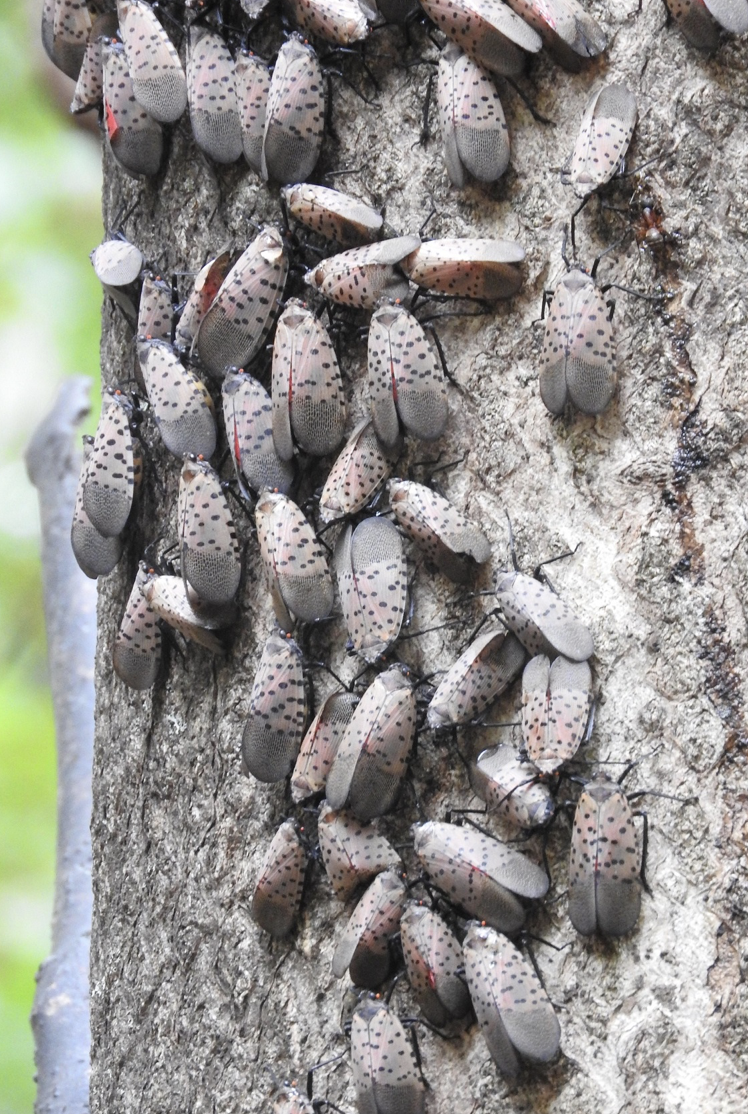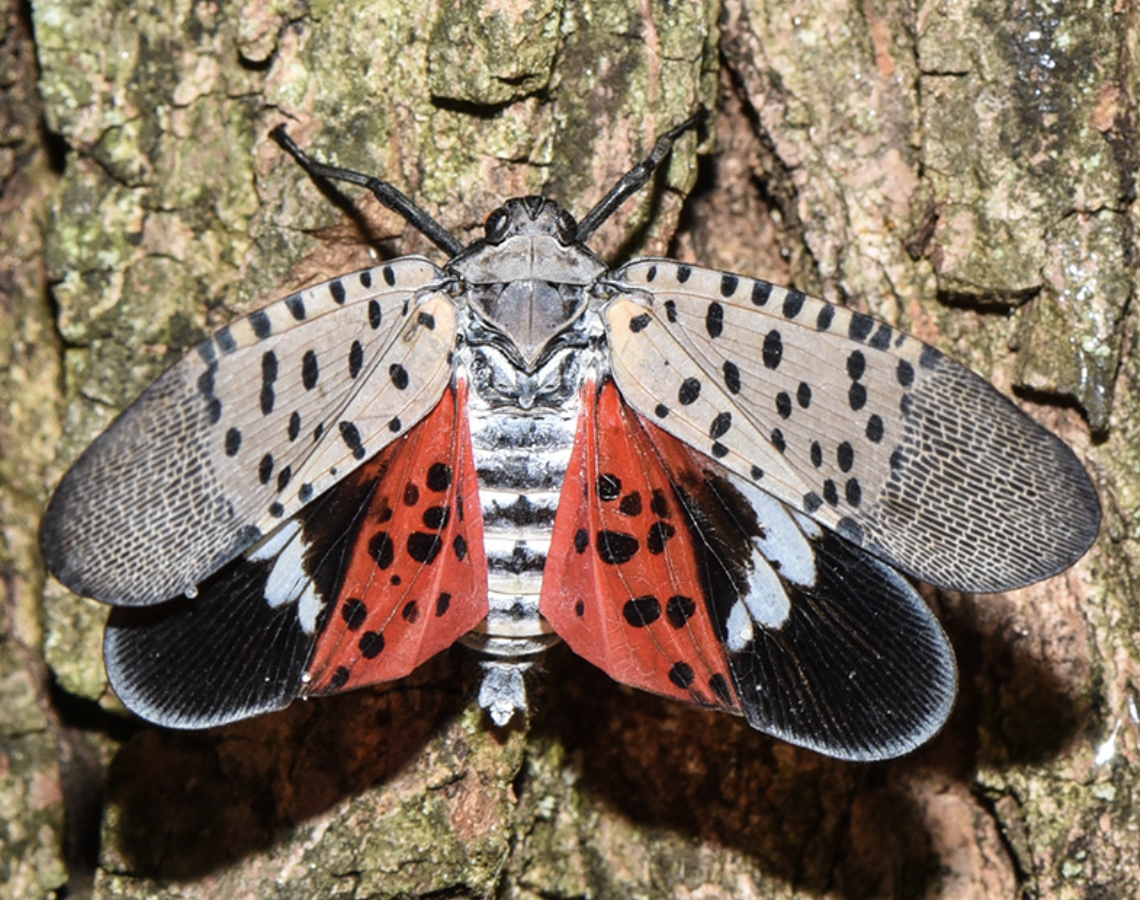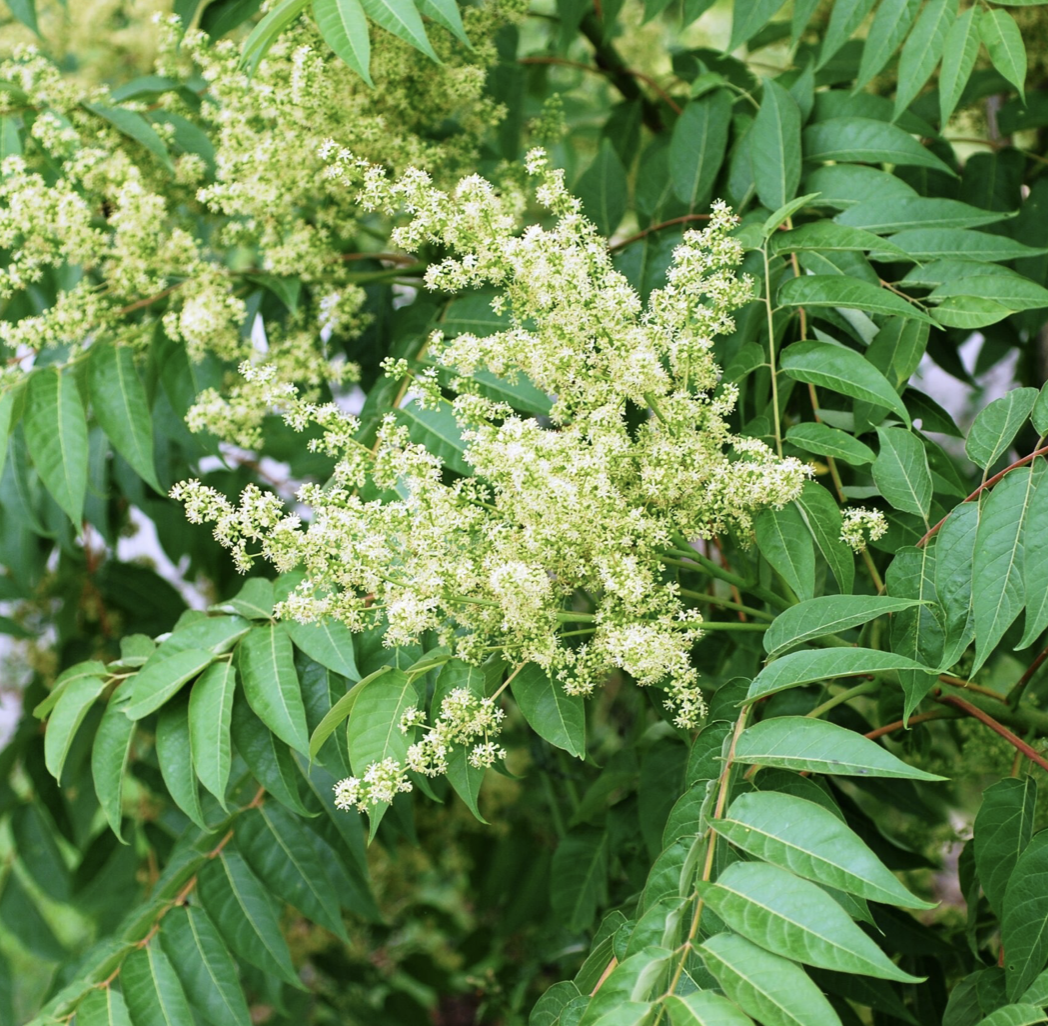The Toxic Temptation: The Dangers of Feeding Wild Spotted Lanternflies to Captive Chameleons



The Toxic Temptation: The Dangers of Feeding Wild Spotted Lanternflies to Captive Chameleons
Abstract Captive chameleons face chronic limitations in dietary diversity due to the narrow range of commercially available feeder insects. In an effort to enrich captive diets, some keepers turn to wild-caught insects such as the spotted lanternfly (Lycorma delicatula). However, this practice poses serious risks. The lanternfly's association with the toxic host plant Ailanthus altissima, potential bioaccumulation of ailanthone, and its invasive status raise concerns about its safety as a feeder. This article reviews the biological and toxicological profile of the spotted lanternfly and argues against its use in captive chameleon nutrition until rigorous safety assessments are completed.
Keywords Chameleon nutrition, Lycorma delicatula, spotted lanternfly, ailanthone, Ailanthus altissima, wild-caught feeders, bioaccumulation, captive reptiles, dietary enrichment, toxic insects
Introdiction
Captive chameleons suffer from a chronic limitation in dietary diversity. The feeder insects commercially available, typically crickets (Acheta domesticus, Gryllus bimaculatus, Gryllus assimilis), mealworms (Tenebrio molitor, Zophobas morio), and dubia roaches (Blaptica dubia), are selected for ease of breeding and transport, not for nutritional completeness (Nečas, 1999). Many of these insects lack the micronutrient profiles, behavioral stimulation, and ecological relevance that wild prey would offer. Consequently, some keepers turn to locally available wild insects to enrich the diet and mimic natural feeding behavior.
This practice, while ecologically inspired, carries significant risks. Wild insects may be protected under conservation laws, making their collection illegal. Others may be contaminated by urban, agricultural, or industrial pollutants. Some species are venomous or poisonous—either through active toxin production or passive accumulation from toxic plants. Additionally, wild insects may carry indigested gut content containing harmful compounds, especially if they have recently fed on poisonous flora or contaminated substrates. These risks are not theoretical; they are documented across multiple taxa and environments (Nečas, 1999).
Biological Profile of the Spotted Lanternfly
The spotted lanternfly (Lycorma delicatula) is a hemipteran planthopper native to China, Vietnam, and parts of Southeast Asia. It has become a highly invasive species in North America and parts of Europe since its accidental introduction in 2014 (Burne, 2020). Adults measure approximately 20–25 mm in length, with gray forewings marked by black spots and striking red hindwings bordered in black. This contrast-rich coloration is typical of aposematic signaling, used by toxic species to warn predators, or Batesian mimicry, where harmless species imitate dangerous ones.
Lanternflies are found in large seasonal aggregations, particularly from late summer to early autumn, often clustering on trees, vines, and ornamental plants. Their preferred host is the Tree of Heaven (Ailanthus altissima), itself an invasive species with potent allelopathic properties (Heisey, 1996). The lanternfly's feeding behavior and visual appeal may trigger opportunistic feeding responses in chameleons, which rely heavily on motion and color contrast to identify prey.
Toxicological Concerns
Ailanthus altissima produces ailanthone, a quassinoid compound with documented phytotoxic and cytotoxic effects. Ailanthone inhibits seed germination and root growth in surrounding plants and has shown toxicity in mammalian cell lines (Heisey, 1996). The spotted lanternfly feeds extensively on this tree, raising concerns about bioaccumulation (Burne, 2020).
While definitive studies on ailanthone sequestration in Lycorma delicatula are ongoing, preliminary research suggests the possibility of toxin retention. If confirmed, this would render the lanternfly potentially harmful to predators, including captive reptiles. Feeding behavior in chameleons is highly visual and opportunistic; the bright coloration of the lanternfly may trigger feeding responses, but ingestion could result in sublethal toxicity or death (IERE Team, 2025).
Moreover, lanternflies excrete copious amounts of honeydew, which promotes the growth of sooty mold and attracts secondary pests. This excretion may carry microbial or chemical contaminants, further complicating their use as feeders (Thanos Home Editorial Board, 2025). Honeydew also supports fungal growth (Capnodium spp.) and may harbor opportunistic pathogens, posing indirect risks to captive reptiles through contaminated enclosures or feeder handling.
Additionally, gut-loading risk must be considered. Insects collected shortly after feeding on toxic plants may carry harmful compounds in their digestive tract, which can be transferred to predators upon ingestion. This route of secondary poisoning is well-documented in insectivores and adds another layer of concern.
Conclusion
The temptation to use spotted lanternflies as feeders is understandable. They are abundant, easy to catch, and visually stimulating for chameleons. However, their ecological role, invasive status, and potential toxicity, especially through interaction with Ailanthus altissima, make them a high-risk choice. The danger is not only from accumulated toxins but also from indigested gut content and microbial contamination. Until rigorous toxicological profiles are established, their use in captive diets should be avoided. The pursuit of cheap and abundant food must never override the imperative of safety and biological appropriateness.
References
Burne A.R. 2020. Pest Risk Assessment: Lycorma delicatula (Spotted Lanternfly). Ministry for Primary Industries, New Zealand. 47pp.
Heisey R.M. 1996. Allelopathic and herbicidal properties of ailanthone. Weed Science 44(3):436–439.
IERE Team. 2025. Are Spotted Lanternflies Dangerous to the Environment? Institute for Environmental Research and Education. Available online at https://iere.org/are-spotted-lanternflies-dangerous-to-the-environment/ (accessed 2 September 2025).
Nečas P. 1999. Chameleons: Nature's Hidden Jewels. Edition Chimaira, Frankfurt am Main; Krieger Publishing Company, Malabar, Florida. 348pp.
Thanos Home Editorial Board. 2025. Risks and Dangers of Spotted Lanternflies. Thanos Home Knowledge Base. Available online at https://thanoshome.com/kb/spotted-lanternflies/risks-and-dangers-of-spotted-lanternflies/ (accessed 2 September 2025).

